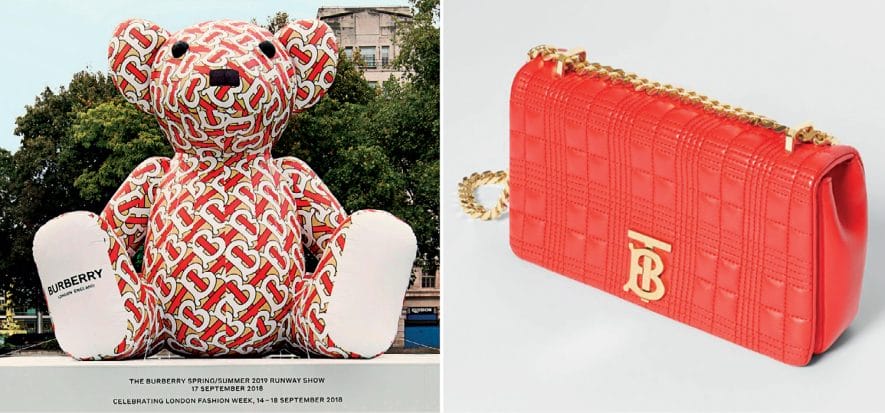On the one hand, 2019 revenues coming from shoes and bags enjoyed a boost; on the other hand, Burberry is going to focus its prospective development on Italian leather. In fact, the British brand will successfully carry out its leather certification plans as long as they can rely on collaboration with Italian tanneries. The aim is to purchase, within 2022, 100% of hides (at present they amount to 64%) coming from tanneries holding environmental, traceability and social compliance certifications. On top of that, Burberry has made public its 2019-2020 annual report. Considering its achievements, alongside its product supply strategy, for the next few months, and provision of materials, the brand has emphasized the role of leather.
Leather certification plans
“Throughout 2019/20 financial year, we have made remarkable progress, with regard to leather traceability in particular – pointed out Burberry in its annual report – as we closely worked in cooperation with our Italian tanneries. At this point, our primary goal is to get 100% of our hides from companies holding traceability, environmental and social compliance certifications. At present, 64% of leather we make use of comes from suppliers who have the certifications above mentioned”.
Burberry sales
In the meantime, looking at 2019 results, leather product sales turned out to be rewarding. Despite a downturn in the overall turnover (-3% at current rates of exchange and -4% at fixed rates of exchange), which went down to 2.633 billion British pounds, revenues from bags and shoes by Burberry have been rising. Leather goods increased by +7% compared to the previous year. “Small leather goods sales could benefit from a growth in demand for entry price items. Such trend – as remarked in the report – has been going on in 2020, as buyers have most opted for non-apparel shopping: they look for cheap small leather goods articles in the middle of global slowdown”. As regards footwear, sales increased by 9%, “mostly driven by demand for street wear and casual apparel younger customers are willing to purchase; likewise, sneakers have been enjoying a considerable boost”.
Leather strategies
Considering the achievements, claimed Burberry, “leather will keep having a leading role in our product supply. Besides that, we shortly expect buyers to become keener on leather goods, casual apparel and entry price articles. In such scenario, Burberry may well rely on a sound standing, since we transformed our supply of products, including leather goods selection over the last year”. For the records, some changes are going to take place along the industry: “We are also progressively enhancing our agility across the supply chain. Top-notch quality will still be of paramount importance in the luxury segment, as customers are more demanding in their shopping – they wrapped up –. We are going to rest on the product architecture we have built up to improve our leather goods supply, which is an important part of our standing in the luxury business”.
Read also:










